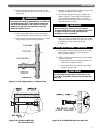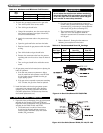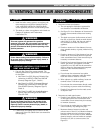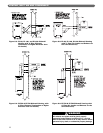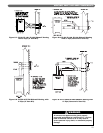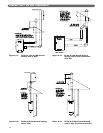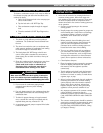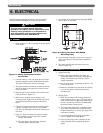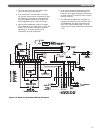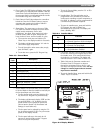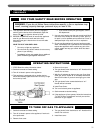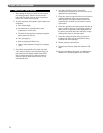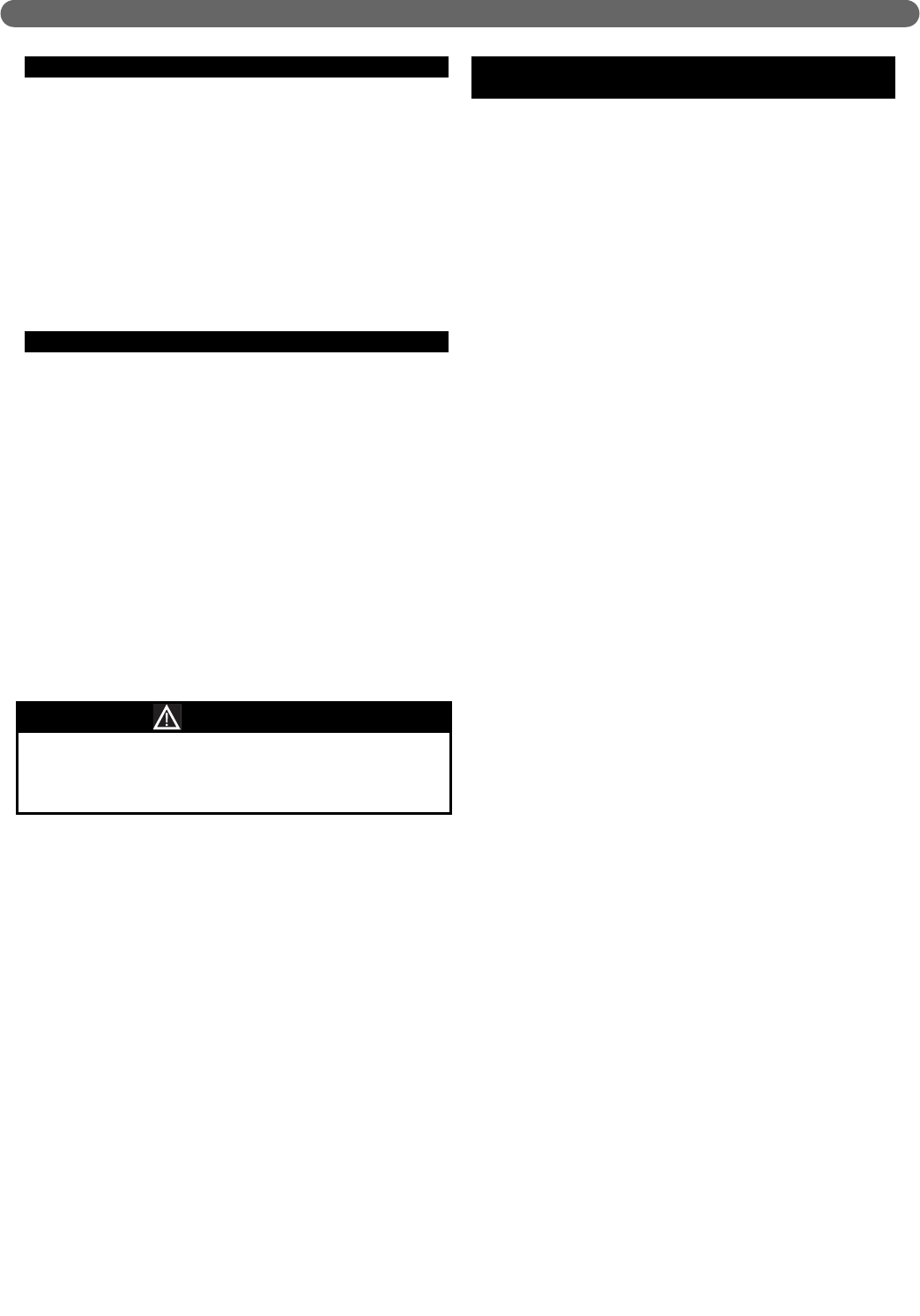
25
F. EXHAUST TAPPING FOR VENT SAMPLE
To obtain a combustion sample a hole must be drilled in
the exhaust vent pipe just above the first elbow at the
outlet of the boiler.
a. Drill a 21/64" diameter hole in the vent pipe just
above the first elbow.
b. Tap the hole with a 1/8" NPT Pipe Tap.
c. Take combustion samples through the tapped
hole.
d. Thread a standard 1/8" NPT Pipe Plug into the
hole.
G. CONDENSATE DRAIN INSTALLATION
1. This boiler is a high efficiency unit that produces
condensate. The condensate must be drained from
the unit.
2. The white hose under the unit is a condensate trap
which prevents products of combustion from exiting
the boiler through the condensate drain.
3. The black plastic 3/4" NPT fitting at the left rear
corner of the boiler is intended for connection to
plastic piping. Do not block vent hole at the top of
the fitting.
4. Slope the condensate drain piping down away from
the unit into a floor drain or condensate pump.
Check with local codes or ordinances to
determine if the condensate must first be
neutralized before running it to a drain.
5. Do not route the condensate piping through
unheated spaces that may reach freezing
temperatures.
6. Use only plastic piping for the condensate drain line.
Metal pipes will corrode and cause blockage of the
condensate drain.
7. To allow for proper drainage on large horizontal
runs, a second line vent may be required and the
required tubing size may increase to 1" I.D.
8. A condensate removal pump is required if the boiler
is below the drain.
H. BOILER REMOVAL FROM COMMON
VENTING SYSTEM
1. At the time of removal of an existing boiler from a
common venting system, follow these steps with
each appliance that remains connected. These steps
are to be completed while all components which
remain connected to the common venting system are
not in operation.
a. Seal any unused openings in the common
venting system.
b. Visually inspect the venting system for proper size
and horizontal pitch. Verify there is no blockage
or restriction, leakage, corrosion, and other
deficiencies which could cause an unsafe
condition.
c. Where practical, close all building doors and
windows, including interior doors between the
space in which the appliances that remain
connected to the common venting system are
located and other areas of the building.
d. Turn on any clothes dryers and any appliance
not connected to the common venting system.
Turn on any exhaust fans, such as range hoods
and bathroom exhaust fans, at their maximum
speed. (Do not operate a summer exhaust fan).
e. Close fireplace dampers.
f. Place the appliance being inspected in operation.
Follow the lighting instructions and adjust the
thermostat so that the appliance operates
continuously.
g. Test for spillage at the draft hood relief opening
after 5 minutes of main burner operation. Use
the flame of a match or candle, or smoke from a
cigarette, cigar, or pipe.
h. After it has been determined that each appliance
remaining connected to the common venting
system properly vents when tested as outlined
above, return doors, windows, exhaust fans,
fireplace dampers and any other gas-burning
appliance to their previous condition of use.
i. Any improper operation of the common venting
system should be corrected so that the
installation conforms with the National Fuel Gas
Code, ANSI Z223.1/NFPA 54 and/or CAN/CGA
B149.
j. The common venting system should be resized to
approach the minimum size determined by using
the appropriate tables located in the National
Fuel Gas Code, ANSI Z223.1/NFPA 54, "Sizing
of Category I Venting."
VENTING, INLET AIR AND CONDENSATE
Make sure the condensate drain piping is below the
level of the boiler to prevent condensate from filling
up the combustion chamber and damaging the boiler.
CAUTION



